THE MYTH OF SUSIYA
by Elder of Ziyon
From The Jewish Chronicle:[1]
The planned demolition of illegally built homes in the West Bank Palestinian village of Sussiya is causing the next diplomatic crisis between Israel and Europe.
Two months ago, the residents of Sussiya lost their petition requesting the High Court to block the planned demolition of the village.
Sussiya is in Area C of the West Bank, where all the planning authority is under Israeli control. The buildings in Sussiya were constructed despite the Israeli Civil Administration's refusal to grant planning permission.
Following the High Court decision, Sussiya has become the focus of an international campaign against the demolition, including multiple visits by foreign diplomats.
Wikipedia[2] says:
Palestinian Susya, called Susya al-Qadima ('Old Susya')[48] is a centuries' old village which written records attest the existence of from 1830.[49]
The references to this belong to a 2012 article[3] in the New York Review of Books and a 2013 article[4] by Rabbis for Human Rights.
The NYRB article asserts, without evidence, that Susya is known as "Susya al-Qadima." I could find no reference to such a village in any sources before the 21st century.
The RHR article says:
The Palestinian village of Susya has existed for hundreds of years, long predating the Jewish Israeli settlement of Susya, which was founded in its neighborhood in 1983. Written records of the existence of a Palestinian community in its location exist from as far back as 1830, and the village is also found on British Mandate maps from 1917. The residents of Khirbet Susya, who today reside in temporary structures north of the Israeli settlement, originally lived in the village of Susya Al-Qadime, located near the ancient synagogue at Susya, where there was a settled village until the 1980s. The Palestinian residents' ownership of this land is established in law.
Everything in this paragraph is a lie.
I did find some old maps[5] that referred to Susiyeh but a survey of 19th century travelogues show that no one lived there, and it was only visited because of the ruins there: From Biblical Researches in Palestine and the Adjacent Regions: A Journal of Travels in the Years 1838 & 1852 by Edward Robinson, Eli Smith and Others, Volume 1:[6]
The Palestine Exploration Fund update in 1875[7] likewise goes into detail on the ruins of Sussieh but doesn't mention anyone living there.
Maps from the 1940s didn't mention any village in the area Susya is. For example, a map that can be seen in the "Palestine Remembered" site[8] to document old Arab villages has nothing where Susya is, as a comparison between Google Maps (surrounding towns circled) and their map shows:
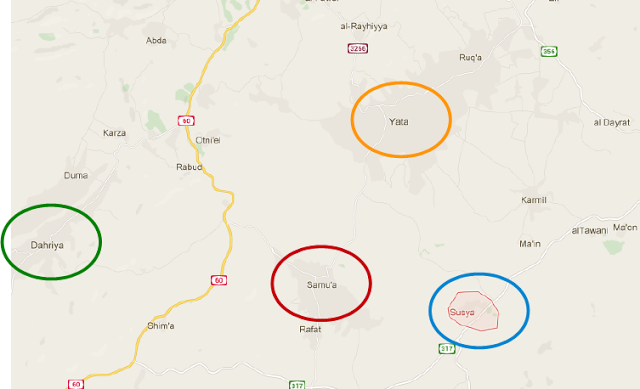
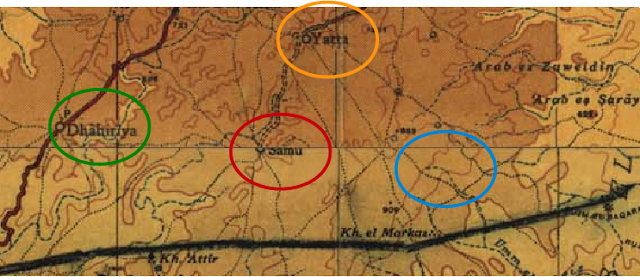
Regavim[9] has the most comprehensive description of the truth about Susiya:
A historical village? Not really! The claim that this is an Arab village which existed hundreds of years, or even decades, is completely false. According to travelers in the 19th century, and from surveys of villages and population conducted by the British mandatory powers in 1945, which mention all of the villages in the area and even some of the inhabitants, there is no hint of the existence of a village named Susiya, except as an ancient archeological site. This rocky land on which this illegal encampment is situated served the purpose of grazing land. In those days, only during the grazing months, the caves in the area provided temporary protection for the shepherds from the village of Yatta from robbers, wild animals, and inclement weather. Aerial photographs testify that in this place, there never was any settlement before the year 2000, except for 4 or 5r structures which were built illegally during the late 1990's.
Jewish history. In the archealogical excavations on the ancient site, there was found an ancient Jewish settlement which dated from the 4th to the 9th centuries of the Common Era. According to the scholars, this was a thriving Jewish community, which existed hundreds of years after the destruction of the Second Temple, and achieved the height of its development at the end of the Byzantine period, and at the beginning of the old Arab period. On the site, they discovered a large synagogue, ritual baths, homes, community buildings, and other structures. Further, in 1986, 277 dunam in the area were allocated to establish an archaeological site, and from then on, it was forbidden for the shepherds to use the old caves. At first, during the grazing seasons, the shepherds came and put up tents and —- for the period of the grazing, but in the last decade, the Nawaja family has tried to take permanent control over the area.
Not an expulsion—an eviction of squatters. Research in the population registries of the Civil Administration indicates that the majority of the families found in the illegal encampment owned homes in the village of Yatta. The Najawa family, who lives in Yatta, seized control of lands which do not at all belong to them. Thus, we are not speaking of driving people off of their lands, but of evicted illegal squatters who have put up tens of structures in violation of the law.
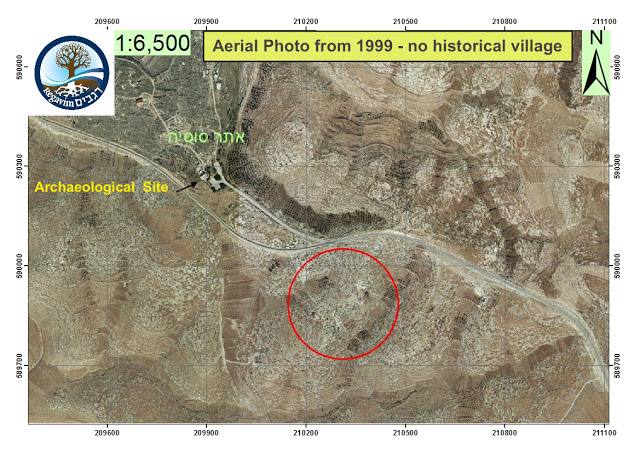
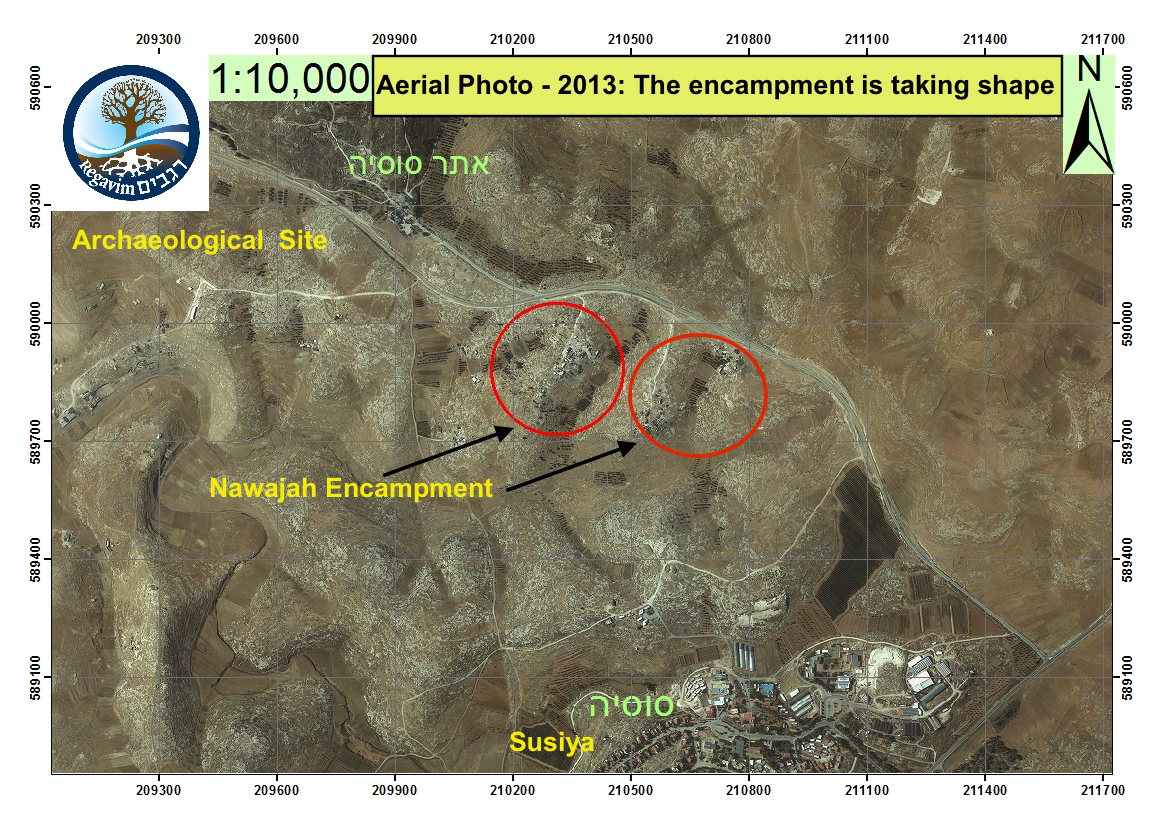
Susiya shows how willing Western reporters and diplomats are to believe the most outrageous Palestinian Arab lies.
The New York Times published an op-ed by one of the squatters where he claims that his family has lived there for generations, without doing any fact checking.[10]
It is a scandal that anyone is writing about Susiya without mentioning that the Arabs are lying about its history.
Footnotes
[1] http://www.thejc.com/news/israel-news/140483/looming-crisis-between-israel-and-europe-over-settlements
[2] https://en.wikipedia.org/wiki/Susya
[3] http://www.nybooks.com/blogs/nyrblog/2012/jun/28/susya-demolition-israeli-occupation/
[4] http://rhr.org.il/eng/2013/11/susya-a-history-of-loss/
[5] http://cs.anu.edu.au/~bdm/yabber/zimmermann/zim07.jpg
[6] https://books.google.com/books?id=MIUKXuBj5pkC&dq=susieh+palestine&source=gbs_navlinks_s
[7] https://books.google.com/books?id=Ls49AQAAMAAJ&pg=PA18&dq=susieh+palestine&hl=en&sa=X&ved=0CD4Q6AEwBWoVChMIlJyTx9vyxgIVxVQ-Ch08BwNA#v=onepage&q=susieh%20palestine&f=false
[8] http://www.palestineremembered.com/download/PalestineBeforeNakba.jpg
[9] http://regavim.org/susiya_facts/. [See also: http://regavim.org/facts-ignored-the-invention-of-a-village/]
[10] http://www.nytimes.com/2015/07/23/opinion/israel-dont-level-my-village.html?_r=0
EDITOR'S NOTE:
Some of the comments that added useful information.
nursemedic I recall going with Haim Mageni and a group of students to the area of Susiya and Eshtamoa in the 80s. One could see remains of the ancient Jewish village there poking out of the ground. There was NO Arab village there. Plain and simple. The only question is: are the Arabs really waging a political battle with this, or is it simply an old fashioned land grab by a local clan? |
|
heb macman It's both!!! A local clan is doing an old fashioned land grab and the rest of the Arabs and the useful idiots (EU, UN etc) are waging a political fight (Israel bashing session) about this... And, of course, the antisemites are using it for their purposes... |
Alexii More mythical history from a mythical "people" used to accuse us of mythical crimes that will be punished in reality. In other words... another big fat lie. |
|
Gabriel These aerial photographs were taken at different scales, and the 1999 one omits the area at the bottom right where Susiya was. Look at them overlaid on each other: 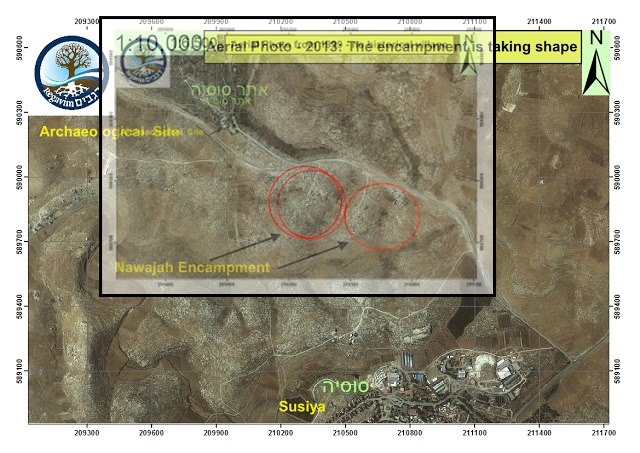 Outrageous piece of trickery that can only have been deliberate.
Outrageous piece of trickery that can only have been deliberate.
|
|
Sunflower Err, the one in the bottom right is the Israeli settlement of Susya, not the Palestinian village. |
Ian According to the Ottoman Land Code (OLC) 1858 (Article 68), if a person to whom the land was given (tassaruf — the right to usufruct of land) was absent (mahlul) for three years and did not use or cultivate the land, or pay fees and taxes, the land reverts to the governing authority. Under the OLC, the land could be passed to legal heirs within five years after the grantee's death, however only with the approval of the governing authority and only as long as taxes were paid. If not claimed or taxes not paid, the property reverts to the authority. It is clear from documents, historical and more recent observations, maps (1890-1945) and aerial photographs that the land claimed by these Arab squatters at Sussiya has not been continuously cultivated, taxes have not been paid and inheritance has not been applied for. Therefore their claims of ownership based on an Ottoman Empire land grant from 1881 are baseless. Moreover, the Arab claimants have no or a very limited connection to the alleged original grantee of the land. Even if some are distantly related to the man who was given permission by the Ottomans to use the land, the validity of that grant expired more than a century ago. |
Yoel Susya: refers to a site in the southern Judaean Mountains of the West Bank that bears the archaeological remains both of a 5th-8th century CE synagogue and of a mosque that replaced it. Yatta, Hebron: Located on a large, ancient hilltop, Yatta has been identified with the site of the Biblical town of Juttah. In 1931, a Jewish burial complex dating to the 2nd century AD was found in the town. Eusebius (4th century) wrote that Yatta was "a very large village of Jews eighteen miles south of Beit Guvrin." So who are the natives, the Jews or the Arabs? |
Yoel Pictures of Jewish Sussia are at
Editor: these are two of them. 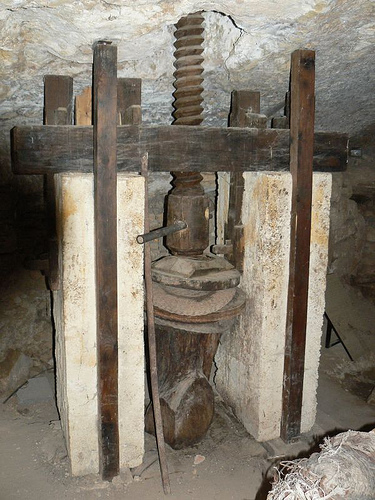
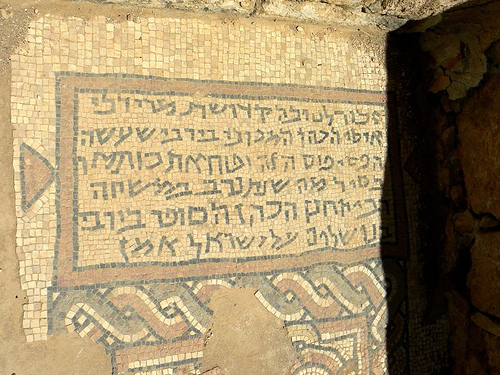
|
This article appeared July 24, 2015 on the Elder of Ziyon blogspot. It is archived at http://elderofziyon.blogspot.com/2015/07/the-myth-of-susiya.html#.Ve5GBt8qcWM
